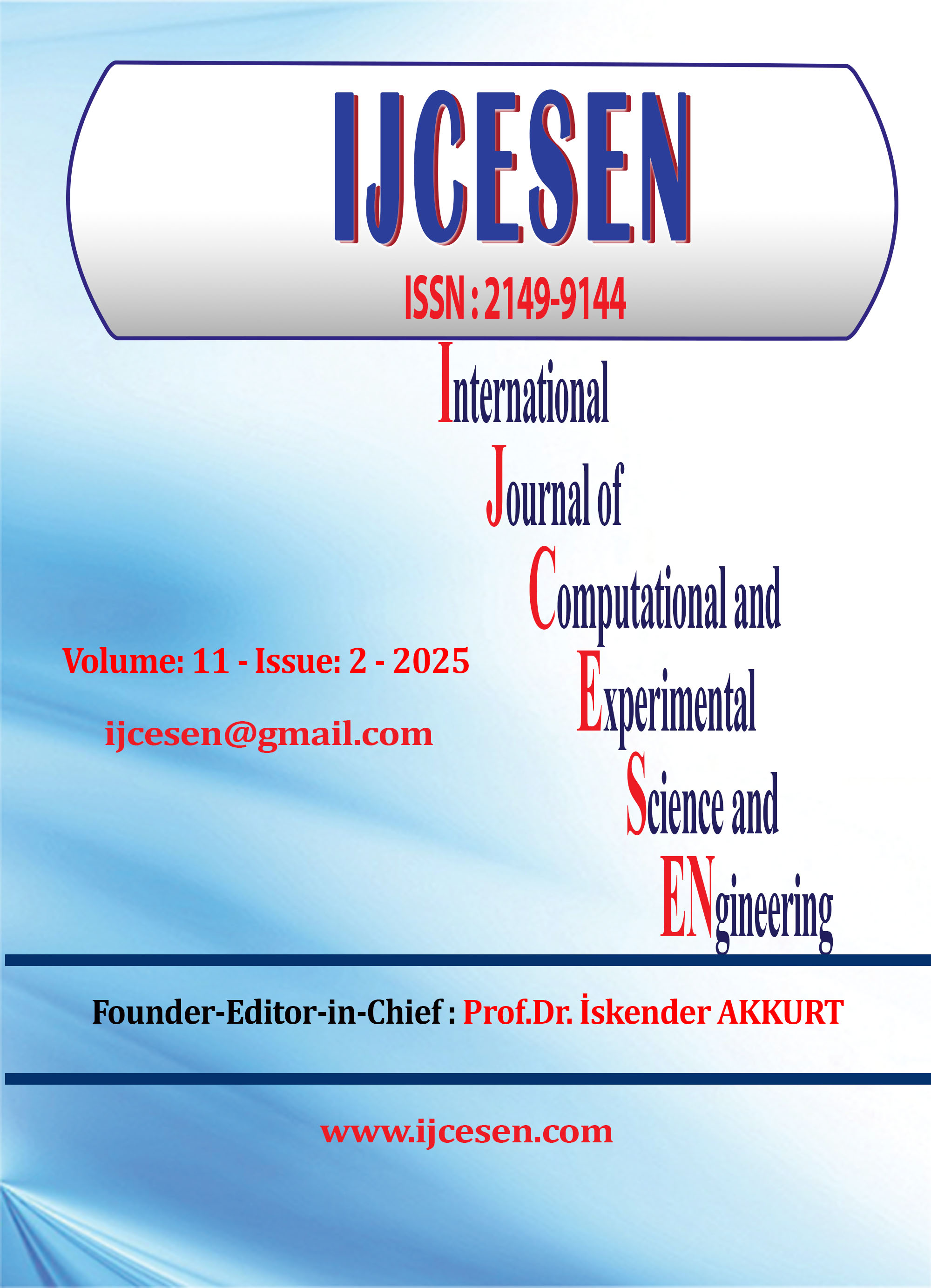Recycling of Gangue Mineral (Pasa) and Its Use in Filled Concrete
DOI:
https://doi.org/10.22399/ijcesen.765Keywords:
filled concrete, Chrome, Gangue Mineral (pasa), Recycling, AggregateAbstract
Aggregate is one of the most important raw materials used in areas such as concrete production, asphalt industry and filling raw material. Most of the aggregates are produced in aggregate quarries, sand and gravel beds. The remaining aggregates consist of recycling of industrial wastes (10%), slag and ashes and debris (8%), marine and industrially produced aggregates (4%). The aggregate industry plays a key role in the functioning of the construction industry's supply chain. However, the fact that natural aggregates are being depleted day by day has led to other aggregate types. Eti Krom Inc. is the world's largest marketable hard lump chrome ore producer. Gangue minerals (pasa) are the rocks that are obtained by the extraction of chrome ore and contain worthless minerals. While some of the gangue minerals are returned to the mine, a large part of it creates a problem as worthless waste. In this study, it is aimed to use the gangue minerals, which is produced in mining activities in Eti Krom Plant, as an aggregate, in the filled concrete. Samples were prepared under laboratory and process conditions. The mechanical properties of the samples were analysed by water absorption, porosity, methylene blue and compressive strength tests. In addition, the characterization analyses of the samples were made with XRD, XRF and SEM/EDX analyses. As a result, it has been observed that the use of gangue minerals as aggregate in the filled concrete can be used as an alternative to natural aggregate.
References
Demir, İ., & Elmalı, M. (2020). Investigation of The Usability of Organic Wastes as A Building Material, Journal of Engineering Sciences and Design, Vol. 8 (4), pp. 1303-1311, DOI: 10.21923/jesd.781554.
Rakshvir, M., & Baraj, S, V. (2006). Studies on Recycled Aggregates-based Concrete, Waste Management & Research Res. 24(3):225-33. DOI: 10.1177/0734242X06064820.
Güçlüer, K., Günaydın, O., Tekin, Ö, F., & Şahan, M, F. (2017). Investigation of The Effect of Different Types of Aggregates on The Mechanical Properties of Concrete, Omer Halisdemir University Journal of Engineering Sciences, Vol. 6 (1), pp. 107-114, DOI: 10.28948/ngumuh.297962.
Mehta, P, K., & Monteiro, P, J, M. (2006). Concrete Microstructure, Properties and Materials, McGraw-Hill (3rd ed.), DOI: 10.1036/0071462899.
Tu, H., Wei, Z., Bahrami, A., Kahla, N, B., Ahmad, A., & Özkiliç, Y, O. (2023). Recent Advancements and Future Trends in 3D Concrete Printing Using Waste Materials, Developments in the Built Environment, Vol. 16, 100187, DOI: 10.1016/j.dibe.2023.100187.
Akyıldız, M, H., Efe, H., & Önen, F. (2020). The Use of Waste Materials in the Construction of Dams: The Case of Kadıköy Pond, DUJE Dicle University Journal of Engineering, Vol. 11 (1), pp. 439-445. DOI: 10.24012/dumf.676017.
Sadıku, H., Kamberi, M., & Nafezi, G. (2024). Creep Coefficient for Self-Compacting Concrete (SCC), International Journal of Computational and Experimental Science and Engineering (IJCESEN), Vol. 10 (3), pp. 292-298. DOI: 10.22399/ijcesen.363.
Zhao, H., Li, X., Chen, X., Qiao, C., Xu, W., Wang, P., & Song, H. (2021). Microstructure Evolution of Cement Mortar Containing MgO-CaO Blended Expansive Agent and Temperature Rising Inhibitor Under Multiple Curing Temperatures, Construction and Building Materials, Vol. 278, 122376, DOI: 10.1016/j.conbuildmat.2021.122376.
Savaş, Y., Başaran, B., & Çetin, B., (2023). The Effect of Marble Powder Additive at Different Ratios on the Radiation Absorption Parameters of Barite Based Concretes, International Journal of Computational and Experimental Science and Engineering (IJCESEN), Vol. 9 (4), pp. 376-381. DOI: 10.22399/ijcesen.132224.
Kırgız, M, S. (2011). The Literature Researches Relating to Substituted and Blended Cement Pastes’ Hydration Compounds’ Determination as Using Scanning Electron Microscope, Journal of Engineering and Architecture Faculty of Eskişehir Osmangazi University, Vol. XXIV (1), pp. 72-90. https://dergipark.org.tr/tr/pub/ogummf/issue/30022/324102.
Binici, H., Eken, M., & Dinçer, A. (2016). Some Properties of Durability of Silica Fume, Fly Ash and Blast Furnace Slag Added Concretes, Çukurova University Journal of the Faculty of Engineering and Architecture, 28 (1), pp.11-20. https://dergipark.org.tr/tr/pub/cukurovaummfd/issue/22759/242918
Ramazanoğlu, B., & Kaya, N. (2023). Effect of Fiber Usage and Mixture Parameters on Crack Development and Crack Control in Cement Based Composites: Review, Journal of the Institute of Science and Technology, Vol. 14 (1), pp. 422-436. DOI: 10.21597/jist.1342361.
Demirel, Ö., & Demirhan, S. (2021). Investigation of Microstructural Properties of High-Volume Fly Ash Blended Cement Mortars Including Micronized Calcite, Journal of the Faculty of Engineering and Architecture of Gazi University, Vol. 36 (4), pp. 2255-2269. DOI: 10.17341/gazimmfd.810835.
Uzbaş, B., & Aydın, A, C. (2018). XRD Analysis of Mechanical Properties of Containing Fly Ash and Silica Fume Concrete, Sinop Uni. J. Nat. Sci., Vol. 3 (2), pp. 1-22.
https://dergipark.org.tr/tr/pub/sinopfbd/issue/40065/407509
Kara, İ, B., & Arslan, M. (2017). Investigation of High Temperature Effects on Concrete Additive Antifreeze, Journal of Science and Engineering, Vol. 2 (1), pp. 1-12. DOI: 10.29002/asujse.319487.
Çelik, M, Y., & Şahbaz, A. (2017). Investigation of the Usability of Ilıca (Kütahya) Basalt as Concrete Aggregate, Journal of Polytechnic, Vol. 20 (4), pp. 887-898. DOI: 10.2339/politeknik.369061.
Kolay, E., & Başer, T. (2012). Investigation of Concrete Aggregate Properties of Sand-Gravel Quarries in Delice River Basin, Cumhuriyet Earth Sciences Journal, Vol. 29 (2), pp. 63-72.
Gu, L., Qin, X., & Feng, J. (20239. Experimental Studies on The Volume Stability of MgO Expansion Agent in Concrete, Journal of Building Engineering, Vol. 79, 107866, DOI: 10.1016/j.jobe.2023.107866.
Gomes, S, D, C., Nguyen, Q, D., Li, W., & Castel, A. (2024). Effects of Mix Composition on The Mechanical, Physical and Durability Properties of Alkali-Activated Calcined Clay/Slag Concrete Cured Under Ambient Condition, Construction and Building Materials, Vol. 453, 139064, DOI: 10.1016/j.conbuildmat.2024.139064.
Ji, H., Guan, X., Wang, Y., Zhang, P., & Long, H. (2023). Discussion on The Water Absorption Depth of Gangue-Based Concrete and Its Relationship with The Damage Layer Thickness, Journal of Building Engineering, Vol. 79, 107735, DOI: 10.1016/j.jobe.2023.107735
Downloads
Published
How to Cite
Issue
Section
License
Copyright (c) 2025 International Journal of Computational and Experimental Science and Engineering

This work is licensed under a Creative Commons Attribution 4.0 International License.





